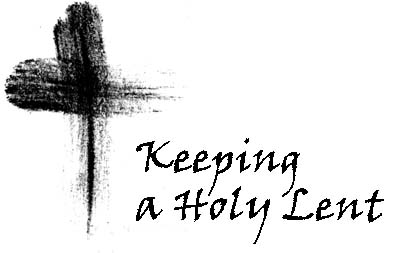
Observe a Holy Lent
OBSERVE A HOLY LENT
 Grace and peace to you from the Lord who forgives all our sins and whose mercy endures forever.
Grace and peace to you from the Lord who forgives all our sins and whose mercy endures forever.
I greet you at the beginning of this Lenten season on behalf of the Dakotas Conference appointive cabinet and the entire Conference Center staff. This is the first of seven videos the cabinet and I will be sharing with you to guide your Lenten journey. Our reflections are based on Adam Hamilton’s recent book, The Way: Walking in the Footsteps of Jesus.
Lent is a forty-day season of preparation for the Easter celebration. It is a time of penance and prayer; a time of rending our hearts and returning to God; a time of fasting and self-denial; a time of ashes and anticipation. The penitential spirit of Lent is always tempered with joyful expectation of resurrection. The discipline of self-denial is always tempered with the grace of self-giving.
The Lenten story always begins where the gospels begin – with John the Baptist. Mark’s gospel, the first of the gospel narratives, begins the story of Jesus’ journey to the cross.
The beginning of the Good News about Jesus Christ, God’s son, happened just as it was written about in the prophecy of Isaiah:
“Look, I am sending my messenger before you. He will prepare your way, a voice shouting in the wilderness: ‘Prepare the way of the Lord; make his paths straight.’
John was in the wilderness calling for people to be baptized to show that they were changing their hearts and lives and wanted God to forgive their sins. Everyone in Judea and all the people of Jerusalem went out to the Jordan River and were being baptized by John as they confessed their sins. John wore clothes made of camel’s hair, with a leather belt around his waist. He ate locusts and wild honey. He announced:
‘One stronger than I am is coming after me. I am not worthy to bend over and loosen the strap of his sandals. I baptize with water, but he will baptize you with the Holy Spirit.’”
John was calling for people to repent of their sin and to return to God and the pathway of God. John was clear that the fruit God was looking for – the pathway God wanted people to follow – was found in being generous toward the poor and demonstrating a genuine concern for them.
John and Jesus were cousins, born six months apart, with mothers, Elizabeth and Mary, who were very close. They were shaped by the same passion for righteousness and justice. They proclaimed the same message. Jesus’ first recorded words in Mark’s gospel come after his baptism by John in the Jordan River, after John’s arrest by King Herod and after his temptation in the wilderness. He goes into Galilee announcing God’s Good News, saying,
“Now is the time! Here comes God’s kingdom. Repent and believe in the Good News.” (Mark 1:15)
John and Jesus were echoing Isaiah and the other prophets. The prophet Isaiah reminded a very religious people that their pious devotion counted for nothing because it was not matched with caring for the poor and oppressed.
“Isn’t this the fast I choose:
releasing wicked restraints, untying the ropes of a yoke,
setting free the mistreated, and breaking every yoke?
Isn’t it sharing your bread with the hungry
and bringing the homeless poor into your house,
covering the naked when you see them,
and not hiding from your own family?”
Isaiah 58:6-7 (Common English Bible)
Religious piety is bankrupt without justice. Lenten disciplines are hollow without sacrificial service. Lenten ashes and sackcloth are empty symbols without solidarity with the poor who wear rags every day. Fasting is void of true spiritual content without sharing your bread with the hungry. Retreating to a sacred prayer place is arrogant without providing places for the homeless.
According to the prophet, when God’s people marry piety and justice and merge fasting and social responsibility, then
? light will break out like the dawn;
? righteousness will walk before you;
? calls to the Lord will be answered;
? life will be like a spring of water that won’t run dry; and
? you will be called Mender of Broken Walls and Restorer of Livable Streets
Isaiah 58:8-12
It is clear our own spiritual and physical health is intricately and intimately bound to the health and well-being of our neighbors. Or, as we affirm in our Wesleyan tradition, personal holiness and social holiness are the inseparable, twin pathways of discipleship.
I invite every United Methodist in the Dakotas to walk in the footsteps of Jesus on his way to the cross. I invite every United Methodist in the Dakotas to observe a holy Lent by prayer, fasting and self-denial and by actively doing justice, loving kindness and walking humbly with God (Micah 6:8b). This is the devotion the Lord chooses. This is the pathway to righteousness. This is the doorway to becoming a vital congregation. This is the spiritual preparation necessary for the Easter celebration.
May the Holy Spirit restore you to newness of life and boldness of witness during your Lenten journey on the way to the cross.
Bishop Bruce R. Ough
Dakotas-Minnesota Area
The United Methodist Church
February 13, 2013
CLICK HERE FOR A BULLETIN INSERT OF THIS MESSAGE
Observe a Holy Lent from Dakotas UMC on Vimeo.